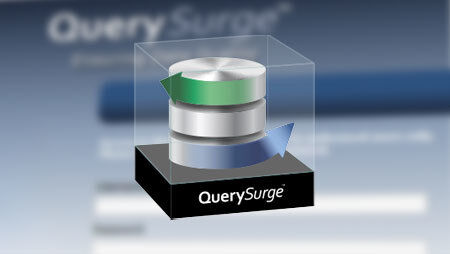White Paper
Data Integrity in the Age of Analytics:
Analyzing Data Validation Challenges
in the Technology Industry

Part I: The Strategic Imperative for Enterprise Data Validation
The technology industry's rapid adoption of Big Data, cloud-native architectures, and machine learning (ML) models has exponentially increased the volume and complexity of data flowing through enterprise systems. While data is lauded as the new oil, its value is nullified—or even inverted—if its quality cannot be guaranteed. Poor data quality is no longer merely an IT inconvenience; it constitutes a profound financial and operational risk, making enterprise-grade data validation a strategic prerequisite for digital transformation.
(To expand the sections below, click on the +)
1.1. The Financial and Operational Toll of Data Quality Deficiencies
The economic impact of compromised data quality is staggering and systemic. Reports indicate that the pervasiveness of bad data represents a massive financial drain, costing U.S. companies an estimated $3.1 trillion annually.1 This burden includes direct financial losses such as duplicate payments, missed cost savings, and the distortion of financial planning and budgeting.2
Beyond direct monetary losses, flawed data quality compromises critical operational processes, leading to significant inefficiencies in supply chain management, inventory control, and production planning.1 Technical failures inherent to bad data, such as corrupt information flowing into downstream systems, necessitate complex remediation efforts. These efforts can consume weeks of high-value engineering time and require emergency patching, pulling development teams away from strategic work.3 These compounded issues contribute heavily to long-term technical debt within an organization.3
Perhaps the most critical risk is the degradation of decision-making ability. Decisions based on flawed data can steer a business in the wrong direction.1 Furthermore, the consequences of bad data ripple outward, damaging customer trust and satisfaction. Incorrect client information often leads to customer loss, and misleading product details can damage the business’ reputation and growth prospects.4
The introduction of Artificial Intelligence (AI) and augmented analytics has introduced a critical amplifying dimension to the problem: the "Garbage In, Garbage Out" (GIGO) multiplier effect.5
When foundational data integrity fails, the errors are no longer confined to static reports; they are fed directly into ML models that execute automated, high-speed actions (such as automated pricing, trading, or inventory adjustments). If the input data is flawed, the resulting automated action is flawed instantly and at scale, transforming a simple data error into a systemic financial failure mechanism.5 Data quality assurance is thus foundational for any successful machine learning initiative.
Finally, the landscape of global privacy regulations (e.g., GDPR, CCPA) requires continuous rule updates and meticulous maintenance of audit trails.6 In this context, data validation transcends its historical role as a quality assurance function and becomes a core component of the organization's overall risk management strategy. Ensuring data integrity through a secure and auditable validation system directly mitigates severe legal, financial, and reputational risks.5
Table 1. The Economic and Operational Cost of Data Quality Failures
Risk Area |
Description |
Metric / Requirement |
|---|---|---|
Financial Cost |
Direct losses, missed savings, inaccurate budgeting, and duplicate payments. |
Estimated $3.1 trillion annually for U.S. companies1 |
Regulatory Risk |
Non-compliance with privacy standards (GDPR, CCPA) and mishandling of sensitive data. |
Requires continuous validation rule updates and robust audit trail maintenance5 |
Operational Impact |
Inefficiencies in supply chain, inventory, and production planning. |
Results in weeks of costly engineering time for complex remediation1 |
Decision Failure |
Guidance of the business based on misleading or incomplete information. |
Leads to misguided strategic direction and failure of advanced analytics1 |
Part II: Systemic Data Validation Challenges in Modern Pipelines
The challenges inherent in modern data architectures manifest as specific technical impediments that actively undermine data integrity and paralyze automation efforts.
(To expand the sections below, click on the +)
- 2.1. The Technical Impediment of Schema Drift
- 2.2. The Pressure of Real-Time Processing and Regulatory Compliance
2.1. The Technical Impediment of Schema Drift
Schema drift represents a fundamental instability in the data pipeline. It occurs when the structure of source data—such as column names, data types, or entire tables—changes unexpectedly.9 These structural changes disrupt established ETL/ELT flows and require immediate attention to maintain data integrity.9
The consequences of schema drift are severe and cascade through the organization. When columns are removed from source systems, data gaps emerge, leading to incomplete or misleading reports and dashboards that rely on that missing data. Similarly, type mismatches (e.g., a column changing from numeric to string) cause data quality issues, preventing essential aggregations and mathematical operations from functioning correctly.9 The failure to synchronize these schema changes across development and production environments results in inconsistent data structures, which renders existing testing and validation efforts ineffective, increasing the risk of production failures.9
The critical issue is that schema drift acts as a perpetual roadblock to achieving true DataOps and Continuous Integration/Continuous Delivery (CI/CD). Since data validation must occur at every stage of the data lifecycle to ensure integrity8, a break caused by schema drift mandates immediate, costly manual remediation and complex troubleshooting.3 This constant need for manual intervention pulls highly paid engineering talent away from strategic projects, contributing to high engineering attrition and compounding long-term technical debt.3 Effective continuous testing, therefore, requires a mechanism to automatically detect schema changes and adapt validation scripts without human intervention.
2.2. The Pressure of Real-Time Processing and Regulatory Compliance
In addition to structural instability, data teams face relentless pressure from regulatory bodies and business demands for speed. The necessity for streaming analytics and real-time operational systems means that validation latency must be near-zero.6 Batch validation approaches, which check data retrospectively, fail to meet these low-latency velocity requirements, leaving organizations operating on potentially flawed data for unacceptable periods.
Compounding this is the ongoing difficulty of complex business rule management. Organizations struggle significantly to maintain consistency across the hundreds, or even thousands, of complex validation rules required for modern systems, while simultaneously ensuring these rules remain relevant to evolving business needs.6 Furthermore, new privacy regulations and industry standards demand continuous updates to validation rules and secure handling of sensitive information.6 Maintaining version control for these validation scripts is essential to ensure testing consistency across different data loads and environments.8 Validation must protect sensitive data while maintaining comprehensive quality checking effectiveness.6
Part III: QuerySurge: Architecture and Foundational Validation Mechanisms
QuerySurge is a dedicated, AI-driven solution designed explicitly to address the scale, complexity, and performance paradoxes inherent in modern data validation, particularly within complex ETL/ELT and Big Data ecosystems.11
(To expand the sections below, click on the +)
3.1. Core Architectural Overview for Scalable Data Validation
QuerySurge utilizes a robust, three-component Web 2.0-based architecture engineered for performance and scalability.12
- Application Server: This component serves as the central orchestration hub. It manages user sessions, handles authentication (including integration with Single Sign-On providers like Okta, Google, and Microsoft, as well as LDAP servers), and coordinates the overall execution of test suites.12
- Database Server: This is a key architectural feature. QuerySurge includes a fully managed, built-in database server specifically dedicated to storing test data and performing all data comparisons.12 This critical decoupling ensures that the highly intensive computational task of comparison does not burden external, high-value production systems.
- Agents: Agents are deployed across the environment to execute queries. They utilize standard JDBC drivers to connect to diverse source and target data stores, returning the query results to the QuerySurge server for subsequent analysis.12 Agents offer flexible deployment options, installable on separate machines, Virtual Machines (VMs), or deployed as Docker containers to allow for resource density and flexible configuration.12
This specialized architecture is designed to circumvent performance bottlenecks. QuerySurge Agents retrieve the required data subsets and pull them back to the dedicated QuerySurge database, where the comparisons are executed quickly.13 This strategy ensures that the extensive comparison process—even when validating billions of records—does not impact the latency or performance of critical production assets, such as cloud data warehouses, Hadoop clusters, or NoSQL stores.13 To manage the resulting volume of validation data, the platform utilizes efficient data handling, boasting a 90% data compression rate, along with functionality for rapidly archiving or expunging old data.13 This architectural separation of comparison logic from the production environment fundamentally removes the trade-off between comprehensive validation and system performance, allowing organizations to achieve maximum integrity without penalizing mission-critical operations.
Table 2. QuerySurge Core Architectural Components and Operational Function
Component |
Core Function |
Strategic Benefit |
|---|---|---|
Application Server |
Manages user sessions, authentication (SSO/LDAP), and centralized test execution orchestration. |
Ensures secure, centralized control and project-level security12 |
Database Server |
Stores test data and executes all high-volume data comparisons. |
Guarantees non-impact execution; comparisons do not burden production systems13 |
Agents |
Execute queries against source and target systems using JDBC drivers. |
Enables heterogeneous connectivity across 200+ data stores12 |
Data Handling |
Compression and archiving of comparison results. |
Achieves a 90% data compression rate for storage efficiency13 |
3.2. Source-to-Target (S2T) Validation Methodology and Connectivity
QuerySurge's core methodology centers on automated, Source-to-Target (S2T) validation, which mimics the data flow along the data lifecycle.7 The validation process utilizes QueryPairs, where a source query and a target query are paired to compare every record set for either an exact match or a predefined variance threshold.14
The platform supports over 200 data stores, addressing the challenge of heterogeneous data environments.7 Its connectivity includes all major Cloud Warehouses (Snowflake, AWS Redshift, Google BigQuery, Azure SQL), Data Lakes (Databricks, Hadoop/Hive, MongoDB), Relational Databases (Oracle, SQL Server, Teradata), and various data file formats (XML, JSON, Flat Files).15 This extensive support, facilitated by JDBC drivers, allows enterprises to validate data movement and transformation across virtually any technology stack. This includes the validation of streaming data platforms like Kafka; QuerySurge can establish a connection via JDBC, allowing data teams to configure QueryPairs that query Kafka data directly and compare it against a corresponding target store, thereby extending continuous validation to real-time pipelines.17
QuerySurge offers three specialized comparison modalities tailored for different testing needs18:
- Column-Level Comparison: This is ideal for Data Warehouses and Big Data environments where tables contain a mix of transformed columns and those that are simply passed through. It allows validation of complex transformation logic on specific fields.18
- Table-Level Comparison: This modality is optimized for Data Migrations and Database Upgrades where the expectation is a direct lift-and-shift with no transformations. It facilitates the rapid comparison of many tables simultaneously.18
- Row Count Comparison: This provides a quick, essential integrity check across all environments (Big Data, Data Warehouses, Migrations) to verify that data extraction and loading completeness requirements have been met.18
Part IV: Automated Intelligence and DataOps Integration
The transition from periodic, manual testing to continuous, automated data quality assurance requires sophisticated integration with development workflows and advanced test generation techniques. QuerySurge achieves this through its AI module and deep API integration.
(To expand the sections below, click on the +)
4.1. The Transformative Power of QuerySurge AI
QuerySurge AI is a generative engine built specifically to accelerate and automate the creation of data validation and ETL test scripts.19 This technology provides a radical shift in the ETL testing process by converting detailed data mappings—the blueprint for data transformation—into functional validation tests written in the data store's native SQL.20
The efficiency gains are massive. Traditional data testing requires strong SQL skills and takes approximately one hour to develop a single test query. Given that the average data warehouse project includes between 250 and 1,500 data mappings, this manual process represents a significant time and resource bottleneck.20 QuerySurge AI virtually eliminates this requirement, allowing for test creation to happen in minutes with little to no human intervention.20
This speed increase provides a strategic workforce multiplier. The AI-driven solution provides a low-code/no-code interface, effectively democratizing test creation. This allows Business Analysts (BAs) and Subject Matter Experts (SMEs), who possess critical business-rule knowledge but may not have deep SQL expertise, to utilize tools like the Query Wizard to automatically generate the "scaffolding" QueryPairs.20 By converting existing documentation (data mappings) instantly into runnable test code, QuerySurge rapidly accelerates the time required to achieve high test coverage, enabling data engineering resources to focus on pipeline construction rather than remedial test writing.
QuerySurge AI offers flexible implementation models to align with organizational compliance and deployment preferences20:
- QuerySurge AI Cloud: A fully hosted model offering rapid deployment with minimal setup, ideal for teams seeking immediate results and low IT overhead.
- QuerySurge AI Core: An on-premises model installed within the user's environment, providing full control over data and configuration, essential for organizations operating under strict compliance or security policies.20
Table 3. Traditional vs. AI-Augmented Data Validation Efficiency
Metric |
Traditional Validation |
QuerySurge AI Validation |
|---|---|---|
Test Creation Time |
Approximately 1 hour per test20 |
Reduced to minutes20 |
Required Skillset |
Requires strong, specialized SQL expertise20 |
Low-code/no-code, accessible to SMEs and BAs21 |
Test Coverage Potential |
Often limited by resource hours (e.g., 10%)22 |
Enables increased coverage, supporting up to 100% data validation7 |
Deployment Model |
Manual script maintenance across versions8 |
Flexible: Cloud (rapid) or Core (on-premises for compliance)20 |
4.2. Achieving Continuous Testing (CT) via DataOps
To integrate seamlessly into modern DevOps and DataOps workflows, QuerySurge provides comprehensive automation and API support. The platform offers extensive RESTful and CLI APIs, with over 60 API calls available, allowing for deep integration into CI/CD pipelines.7 This enables the dynamic generation, scheduling, execution, and updating of tests based on pipeline events.13
QuerySurge facilitates continuous data integrity across the entire data delivery lifecycle24:
- Unit Testing: ETL developers use QuerySurge to build Unit Test QueryPairs and execute them immediately as code is committed. This allows issues to be caught quickly and early in the development environment, dramatically reducing the eventual remediation costs down the line.24
- Functional and System Testing: Testing teams utilize QuerySurge for rapid, high-volume data testing during the development cycle. The execution APIs can be leveraged to automatically trigger test runs whenever an ETL leg completes, supporting 24x7 continuous testing.24
- Operational Monitoring: The Operations team uses QuerySurge for proactive monitoring of production ETL runs. A library of SQL pairs is automated to execute immediately after the ETL or build process concludes. This continuous validation quickly identifies and flags production data issues.24
Furthermore, QuerySurge supports deep integration with leading Test Management Solutions, such as Micro Focus ALM/Quality Center, IBM RQM, and Microsoft DevOps.7 This ensures that data validation metrics are centrally managed and visible alongside application testing results. Finally, the platform includes dedicated data analytics dashboards and reports, providing stakeholders with real-time visibility and smart intelligence regarding data quality, facilitating informed decision-making.7
Part V: Strategic Benefits, Scalability, and Return on Investment (ROI)
The technological advantages of QuerySurge translate directly into strategic business benefits, enabling enterprises to manage data risk, accelerate delivery, and realize a significant return on investment.
(To expand the sections below, click on the +)
- 5.1. Scalability, Coverage, and Performance Validation
- 5.2. Competitive Landscape and Core Differentiation
- 5.3. Return on Investment (ROI) Realization and Case Studies
5.1. Scalability, Coverage, and Performance Validation
QuerySurge is engineered to handle validation at an extreme enterprise scale. Case studies demonstrate its deployment in complex, petabyte-sized data migration projects.22 For example, in validating a telecom’s data migration, QuerySurge was successfully used to validate a total of over 9.2 billion records, with the largest single table validated containing 4.8 billion records.25
The capacity to validate billions of records and achieve 100% coverage fundamentally alters the data governance landscape. It allows organizations to move away from the statistically risky practice of data sampling8 toward deterministic data integrity. This absolute certainty in data quality is mandatory for critical financial, medical, and regulated data flows, satisfying stringent internal and external audit requirements by verifying every record processed in major transformations.
The combination of automation and architectural decoupling allows for unprecedented speed. Organizations using QuerySurge can validate up to 100% of all data at speeds up to 1,000 times faster than traditional manual or script-based testing methodologies.7 This speed allows data validation to keep pace with the high-velocity requirements of modern pipelines. The platform’s broad use case applicability—encompassing Data Warehouse, Big Data, Data Migration, Business Intelligence (BI) Report, and Enterprise Application testing—ensures that data integrity is validated across the entire technology stack.7
5.2. Competitive Landscape and Core Differentiation
In the competitive landscape of software and data testing, QuerySurge maintains a distinct advantage through its specialized focus and depth of automation. The platform is built exclusively for automated data testing and validation across ETL/ELT processes, data warehouses, and Big Data ecosystems.23 This dedicated focus results in deeper capabilities in automated regression testing, robust DevOps integration, and analytics-ready output, compared to alternative solutions that treat validation as a subsidiary component of a broader data management suite.23
QuerySurge’s differentiation is particularly evident in its automation capabilities. While other platforms offer execution automation, QuerySurge provides comprehensive end-to-end automation spanning scheduling, regression management, notification, and result analysis.23 The extensive API library (over 60 API calls) facilitates deeper integration into CI/CD workflows than typically offered by competitors.23 Furthermore, the proprietary QuerySurge AI engine provides an unparalleled capability for rapidly generating complex test scripts directly from data mappings, which significantly minimizes the human effort bottleneck and is a key competitive advantage in accelerating data integrity efforts.19
5.3. Return on Investment (ROI) Realization and Case Studies
The strategic implementation of QuerySurge delivers a massive return on investment, derived primarily from efficiency gains, reduced risk, and accelerated time-to-market.13 Catching data defects earlier, particularly during the developer’s Unit Test phase, drastically reduces the time and cost required for remediation later in the lifecycle.24
Real-world deployments demonstrate substantial quantified benefits:
- Coverage and Resource Savings: A leading global industrial truck manufacturer utilized QuerySurge to increase their testing coverage from a statistically risky 10% to 100% data validation while achieving a significant reduction in required testing resource hours.22
- Time Reduction: A global sustainability management company partnered with QuerySurge to automate its validation processes and realized a 90% savings in data testing time.22
- Complex Project Confidence: In a complex migration project involving billions of records, the successful execution and re-running of QueryPairs provided the necessary confidence to the client to proceed with the migration successfully.25
Ultimately, the most profound strategic return on investment is the assurance provided by guaranteed data quality—the "peace of mind" that enables enterprises to confidently proceed with high-stakes initiatives like system upgrades, cloud migrations, and production deployments.22
Conclusions and Recommendations
The technology industry faces an acute data validation crisis driven by extreme scale, high velocity, architectural complexity (ELT), and the amplified risk profile introduced by AI/ML systems. Traditional, manual validation methods are fiscally unsustainable, technically infeasible at scale, and pose unacceptable regulatory risks due to insufficient auditability and reliance on risky sampling techniques.
QuerySurge provides a comprehensive, enterprise-grade solution that strategically addresses these core challenges. Its architectural decision to decouple the comparison workload from production systems enables deterministic, 100% data coverage without compromising performance. Furthermore, the integration of generative AI technology accelerates test creation by orders of magnitude, effectively eliminating the human bottleneck and democratizing testing for subject matter experts. By providing deep API support for DataOps and CI/CD, QuerySurge ensures that data integrity becomes a continuous, automated, and auditable process, integrated seamlessly into the delivery pipeline.
For Chief Data Officers and Enterprise Data Architects tasked with delivering trusted, compliant, and actionable data at scale, the adoption of a dedicated, AI-augmented automated validation platform like QuerySurge is not merely a cost-saving measure, but a fundamental prerequisite for effective risk management and the successful implementation of advanced analytics strategies. The evidence demonstrates that by adopting QuerySurge, organizations can drastically accelerate time-to-coverage, minimize technical debt, and transform data validation from a critical bottleneck into a competitive differentiator.
Works cited
- The Hidden Costs of Bad Data — How Inaccurate Information Hurts Your Business, accessed October 21, 2025
https://www.launchconsulting.com/posts/the-hidden-costs-of-bad-data — -how-inaccurate-information-hurts-your-business - How Much is Poor Data Costing Your Finance Department? — Velosio, accessed October 21, 2025
https://www.velosio.com/blog/how-much-is-bad-data-costing-your-finance-department/ - When bad data ruins business: real-world consequences — Great Expectations, accessed October 21, 2025
https://greatexpectations.io/blog/when-bad-data-ruins-business-real-world-consequences/ - The Impact of Poor Data Quality (and How to Fix It) — Dataversity, accessed October 21, 2025
https://www.dataversity.net/articles/the-impact-of-poor-data-quality-and-how-to-fix-it/ - Addressing Enterprise Data Validation Challenges | QuerySurge, accessed October 21, 2025
https://www.querysurge.com/resource-center/white-papers/ensuring-data-integrity-driving-confident-decisions-addressing-enterprise-data-validation-challenges - Data Validation in ETL: Why It Matters and How to Do It Right | Airbyte, accessed October 21, 2025
https://airbyte.com/data-engineering-resources/data-validation - ETL Testing — QuerySurge, accessed October 21, 2025
https://www.querysurge.com/solutions/etl-testing - Data Validation in ETL — 2025 Guide — Integrate.io, accessed October 21, 2025
https://www.integrate.io/blog/data-validation-etl/ - What is Schema-Drift Incident Count for ETL Data Pipelines and why it matters? | Integrate.io, accessed October 21, 2025
https://www.integrate.io/blog/what-is-schema-drift-incident-count/ - Understanding Schema Drift | Causes, Impact & Solutions — Acceldata, accessed October 21, 2025
https://www.acceldata.io/blog/schema-drift - Data Warehouse / ETL Testing — QuerySurge, accessed October 21, 2025
https://www.querysurge.com/solutions/data-warehouse-testing - Product Architecture | QuerySurge, accessed October 21, 2025
https://www.querysurge.com/product-tour/product-architecture - Achieving Data Quality at Speed — QuerySurge, accessed October 21, 2025
https://www.querysurge.com/business-challenges/speed-up-testing - Testing Across Platforms | QuerySurge, accessed October 21, 2025
https://www.querysurge.com/business-challenges/testing-across-different-platforms - Integrations | QuerySurge, accessed October 21, 2025
https://www.querysurge.com/solutions/integrations - QuerySurge Features, accessed October 21, 2025
https://www.querysurge.com/product-tour/features - Validate Kafka Data with QuerySurge — CData Software, accessed October 21, 2025
https://www.cdata.com/kb/tech/kafka-jdbc-querysurge.rst - Query Wizards | QuerySurge, accessed October 21, 2025
https://www.querysurge.com/product-tour/querysurge-query-wizards - QuerySurge AI Models, accessed October 21, 2025
https://www.querysurge.com/solutions/querysurge-artificial-intelligence/models - The Generative Artificial Intelligence (AI) solution… — QuerySurge, accessed October 21, 2025
https://www.querysurge.com/solutions/querysurge-artificial-intelligence - Using the Query Wizard — Customer Support, accessed October 21, 2025
https://querysurge.zendesk.com/hc/en-us/articles/216492863-Using-the-Query-Wizard - White Papers & Case Studies — QuerySurge, accessed October 21, 2025
https://www.querysurge.com/company/resource-center/white-papers-case-studies - QuerySurge vs DataGaps — Competitive Analysis, accessed October 21, 2025
https://www.querysurge.com/product-tour/competitive-analysis/datagaps - Roles and Uses — QuerySurge, accessed October 21, 2025
https://www.querysurge.com/product-tour/roles-uses - Atos Success Story | QuerySurge, accessed October 21, 2025
https://www.querysurge.com/resource-center/case-studies/atos-success-story



